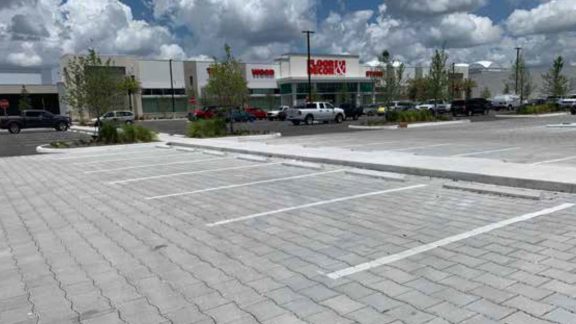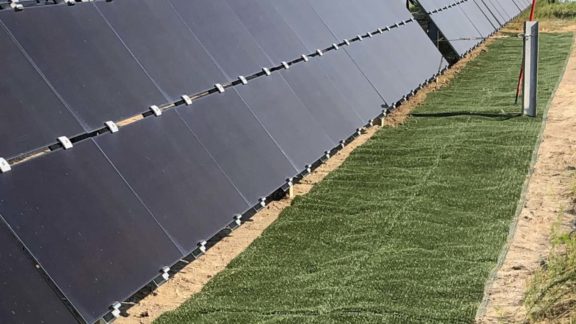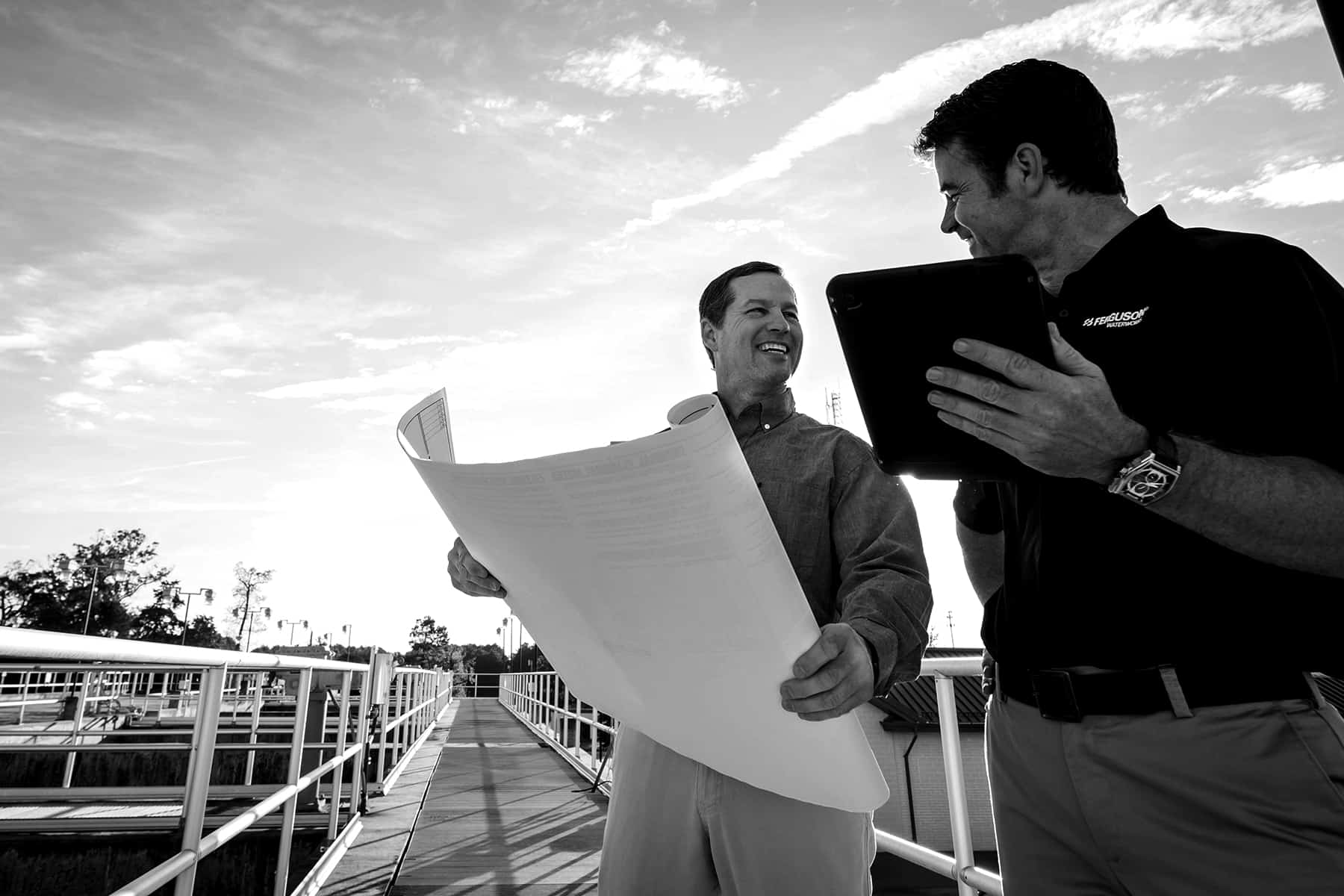Focalpoint Biofiltration Maximizes Parking Lot Space In Bel Air, MD
FocalPoint increases available parking at a new medical center with visually appealing solutions that meet stormwater requirements
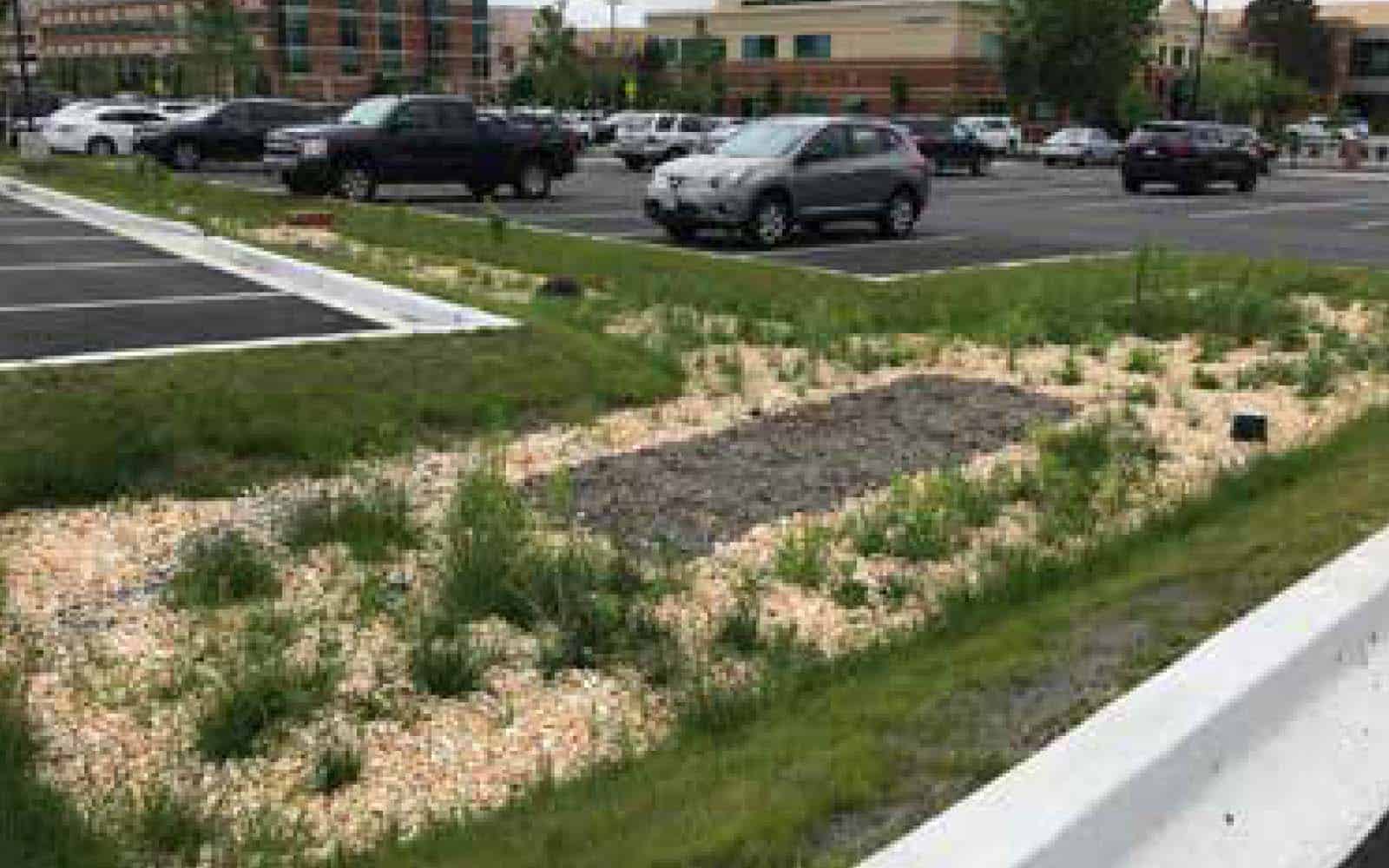
Download Case Study
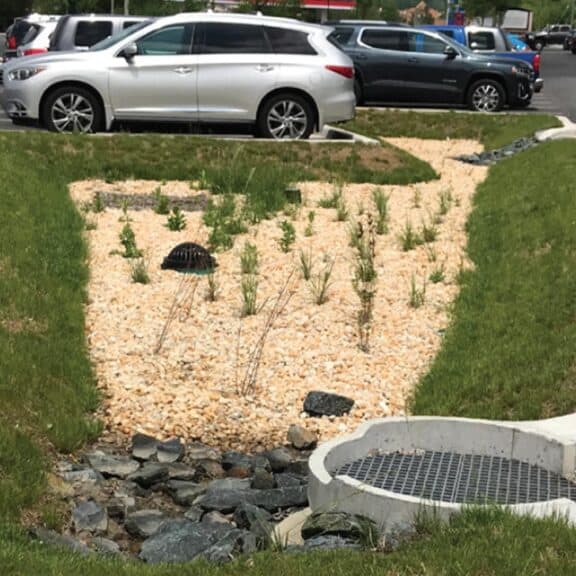
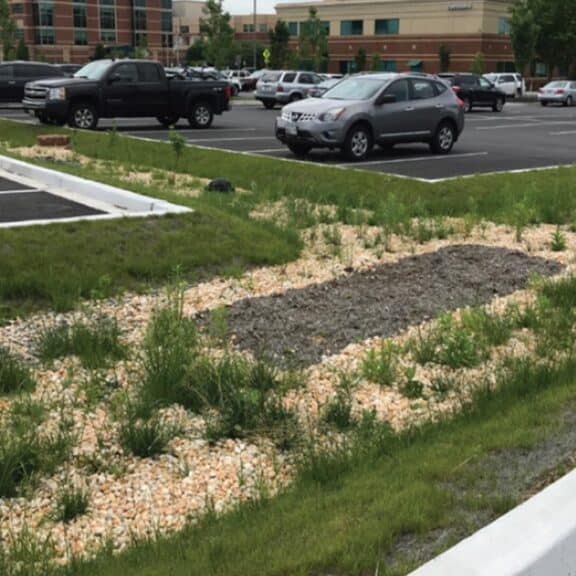
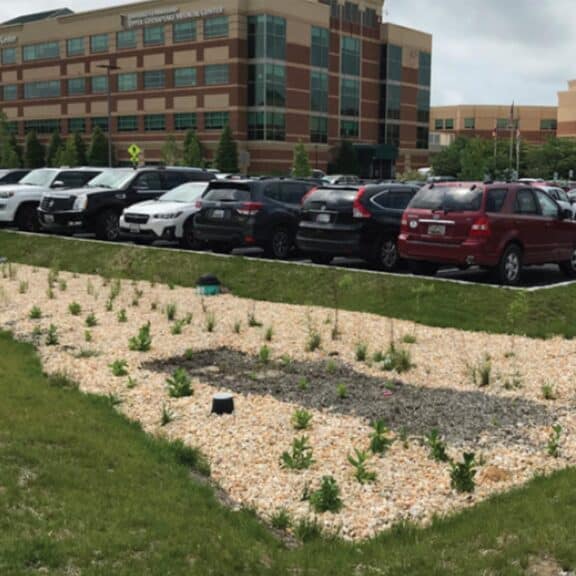
Challenge
The Kaufman Cancer Center in Bel Air, MD was in the process of a large expansion. In addition to modernizing and enhancing their facilities, they also required a larger parking lot. With finite square footage for the lot and the goal of obtaining as many parking spaces as possible, their team needed a strategic, space-saving approach for handling stormwater runoff and meeting stormwater requirements. Unfortunately, traditional bioretention systems are large, consequently reducing the available spaces.
Solution
Ultimately, the medical center wanted to maximize the amount of parking spaces meanwhile adhering to stormwater BMPs. To accomplish this, the Ferguson Waterworks team recommended FocalPoint, a space-efficient and modular bioretentation system. In addition to the FocalPoint Biofiltration System, we also incorporated R-Tank Stormwater Modules, Fabco’s Beehive Raingarden Overflow Filters, Rain Guardians, and visually pleasing landscaping techniques.
Product Advantages & Installation
The FocalPoint biofiltration system treats the same quantity of stormwater as traditional systems, however, its footprint is 70-80% smaller. Furthermore, it reduces the ponding area by 50%.
System Installation
With 3 separate parking sites to consider, we split the area into 12 segments. Then, we installed a total of 1,078 square feet of the FocalPoint system. In addition, we implemented expanded underground R-Tanks. Using our R-Tank Design Tool we determined 2,062 modules would be appropriate to meet stormwater regulations. Furthermore, the R-Tanks offered channel protection and provided ample runoff storage to reduce the likelihood of flooding or ponding in the lot. To protect the system, 9 Rain Guardian Turrets were installed for pretreatment (with a focus on low-lying areas). Lastly, 12 Beehive Overflow filters were installed for protection against heavy rain events.
Once the installation was finished, the FocalPoint biofiltration systems were “capped and covered” with a geotextile for the remainder of construction. This protected them from heavy construction sediment loads. When construction was finished, the geotextiles were removed before system activation. Then the team added mulch, plantings, and gravel to the ponding areas. Not only does this assist with nutrient uptake, but it is also aesthetically pleasing and camouflages the stormwater system from patients.
Results
The high flow rate “k-factor” of the FocalPoint media bed shrunk the bioretention footprint drastically. This maximized the amount of parking spots available and met the client’s parking area goals. Maintenance is simple and the client is pleased with the outcome.
View Similiar Case Studies
In order to revitalize and meet stormwater codes, the abandoned parking area at the Shoppes at Fashion Square in Orlando, FL, required updates. With a permeable paving system and machine technology, we helped the client achieve their goals, save $1 million, and complete the project in just 10 days.
With solar panels in place and operational, an immediate and effective erosion control solution was imperative. Especially considering the panels were positioned next to channels, drip lines, and spillways.
After failed attempts to stabilize the earth at the Mt. Jackson Solar Farm, they required an immediate, cost-effective erosion control solution. Ferguson Waterworks was brought on board to address their ongoing concerns.
